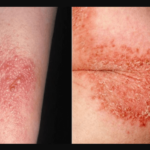During pregnancy, babies can get nourishment, oxygen, protection, and warmth from their mother’s body. When babies are born, they suddenly find themselves without direct access to these essential needs.
This is the reason why babies need to have close skin to skin contact, also known as kangaroo care, with their mothers because it is the closest they can get to feel the warmth and safety of the womb.
But for some reason, some mothers could not hold their babies right away. If you are a mother who didn’t do skin to skin early on (or enough skin to skin time), you may be wondering, is it too late to start skin to skin with baby?
It is not too late to start skin to skin with baby. Babies benefit from skin to skin contact with their mothers at any time after birth – even months later. Ideally, skin to skin starts immediately after birth, but it is better late than never.
Some of the benefits of skin to skin contact are as follows:
- It helps regulate the infant’s heartbeat and body temperature.
- It helps normalize breathing patterns.
- It builds up the infant’s immunity.
- It keeps the infant’s blood sugar at normal levels.
- It stimulates a part of the newborn’s brain that takes the baby to establish a normal pattern of behavior.
- It helps the baby latch on you and start breastfeeding.
- It can greatly contribute to the infant’s brain and behavioral development.
- It can reduce discomfort and establish a safe environment for the child.
Is It Too Late to Start Skin to Skin with Baby?
Ideally, for effective skin to skin contact, mothers and their babies should be in direct contact for the initial two hours after birth, others right after the baby is pulled out from the belly. The nurse wipes the baby and places them directly on her mother’s breast to initiate “latch on.”
For most mothers, skin to skin contact happens a couple of hours after birth. The baby only wears a dry cap and a diaper so that the majority of their skin is in contact with the bare chest of his mother in between her breasts. A drape should cover both of them to keep them warm. If the mother is unable to give skin to skin care, then dad can take over.
When practicing the skin to skin contact with the baby, make sure that you do the following:
- Avoid wearing any form of perfume, aftershave or strong-smelling shower gel. Babies recognize your natural smell, and they will love it more than anything else.
- You must wear front-buttoned clothes that can easily be used as a wrap.
- Sit in a reclined position.
- Prepare a blanket or bathrobe to wrap around the baby during the cuddle time.
Within minutes, both the mother or the father and the baby will relax; and the baby’s body temperature, heart rate, and breathing will become stable.
If the parents are prohibited from practicing skin to skin contact with their newborn for medical reasons, any form of touch can be a great comfort to the child. You can hold your baby’s hand or gently place your hand over their chest so your child can feel and smell you. You can catch up with cuddling once you or your child is well enough to hold each other near.
The below video gives more info and tips on skin to skin contact and its benefits:
Short-term Benefits of Skin to Skin with Baby
Babies, especially premature babies, can thrive when close to their mother’s body. The mother’s natural skin flora has beneficial types of bacteria. This bacteria allows the infant’s body immunity to develop a wide range of healthy bacteria that help protect the baby from bad bacteria.
Also, the good bacteria present in breast milk help coat the intestinal walls of the infant’s body that can boost digestion and prevent harmful bacteria from thriving.
Skin to skin contact with the mother calms the infant. This happens perhaps because the baby is familiar with the mother’s heartbeat and voice that may soothe them during the transition from living inside the womb into the world.
A normal pattern of behavior is established, starting with relaxing, listening to your heartbeat, opening their eyes, and looking at you for the first time. Also, moving their hands and mouth, crawling, exploring, and suckling your breast for the first time are all important stepping stones.
Being close to the mom’s body helps the baby stabilize their body thermoregulation. The risk of hypothermia is high in newborns since they still have an underdeveloped body system, especially thermoregulation. The mother’s body heat helps the infant to stay warm, reducing the risk of lowering the temperature.
These positive signals translate to good feelings of safety and security for the baby. Having these positive feelings also contribute to brain development.
Skin to skin contact with the mother reduces crying in infants. The moment babies are reunited with mothers; they stop crying. It is a primal human instinct that calls the mother back to attend to her crying child.
Long-term Benefits of Skin to Skin with Baby
Not only does this method give short-term benefits to the baby and mother, but it also has a list of long-term effects as observed by researchers and medical practitioners.
The effects of skin to skin care can last for years. In a long-term study from an Israeli medical center’s neonatal intensive care unit, the researchers found that children who experienced the kangaroo care when they were still infants had better maternal attachment behavior, enhanced child brain development, mother-child reciprocity, and reduced maternal anxiety.
Other long-term effects of skin to skin care can still be observed even 20 years later. According to research conducted by the journal of Pediatrics (source), when parents practice kangaroo care with their infants, their children grew up to have higher IQ scores, perform better in school, and have a preferable social demeanor.
Researchers followed up more than 400 young adults who were part of a mother-infant bonding trial when they were premature newborns. They found out that the children of parents who practiced skin to skin contact had the following behavioral and developmental traits:
- Reduced hyperactivity, aggressiveness, externalization and socio-deviant conduct
- Reduced school absenteeism
- Had larger areas of gray matter that are responsible for brain processing
So is it too late to start skin to skin with baby, if months have passed since birth without enough proper skin to skin? No, there are still many benefits for the baby that can be found years after, even if you start skin to skin later. There are benefits for the parents too!
Benefits to Parents
Skin to skin contact benefits both babies and parents. There is also a significant finding for parents who practiced this care method. Parents who practiced skin to skin care were more nurturing and protective compared to parents from the sample group who did not practice the skin to skin method.
The brain releases a chemical called ‘oxytocin,’ the hormone responsible for happiness, and a significant decrease in the ‘cortisol’ hormone, which is responsible for stress. Skin to skin contact or the kangaroo mother care helps families to become more child-oriented, feel happier, and more relaxed during cuddling time.
Parents and their children understand and communicate with each other better when they foster an environment where safety and trust reside. It promotes stronger parental bonds and will lead to happier family life.
See the below video for more benefits of skin to skin contact for baby and mom:
Conclusion – Is It Too Late to Start Skin to Skin with Baby?
Is it too late to start skin to skin with baby? It is better late than never for skin to skin contact with baby. It is recommended that parents practice more opportunities for skin to skin care whether their child is born a preemie or term any time after birth.
Medical practitioners recommend skin to skin contact in the hospital and at home for several months because of the short and long-term benefits to infants and parents.
- It reduces the risk of infections and increases growth and breastfeeding rates that may eventually result in shortened hospital days.
- Skin to skin contact initiates breastfeeding.
- Skin to skin with your newborn can build up her immunity and keep her blood sugar at normal levels.
- The method also helps regulate the infant’s heartbeat and breathing.
- It stimulates a part of the newborn’s brain that takes the baby through a natural pattern of behavior.
- A newborn’s body has little ability to regulate their body temperature. It greatly reduces the risk of hypothermia in infants.
- Being close to the mother stimulates the newborn’s brain that can significantly contribute to the infant’s brain development.
- Babies achieve comfort, knowing that their mothers are close to them. This is hugely beneficial during uncomfortable medical procedures, such as blood tests and injections.
- It dramatically reduces crying in infants.
During pregnancy, the baby is surrounded by the safe structure of the womb, but when they are born, the baby’s body adjusts to the world. The mother’s body is the infant’s safe fortress after birth. It is where the baby feels more safe and secured.
The closer the baby gets to their mother, the safer and more secure they feel. These positive feelings will help the baby develop physically, emotionally, and mentally that can prepare them for life.
The proximity of the newborn to the mother or father can significantly trigger the parents’ nurturing and protective instincts, making their bond stronger as a family.
The kangaroo care method or skin to skin contact has been scientifically proven to give lasting benefits to the child and parents. Considering that cuddling gives these many advantages, parents with infants should make “hug time” a priority in their daily schedules.
So when you ask, “Is it too late to start skin to skin with baby?” It is never too late to give your little one a big warm hug any time of the day, even if they have grown bigger.
The power of touch is good for you and your child, no matter the age. So go ahead, moms and dads, give your kids a warm cuddle today!

![Neutral Skin Tone Defined [and Best Colors for Neutral Skin] neutral skin tone](https://skincaregeeks.com/wp-content/uploads/2021/05/neutral-skin-tone-150x150.png)







